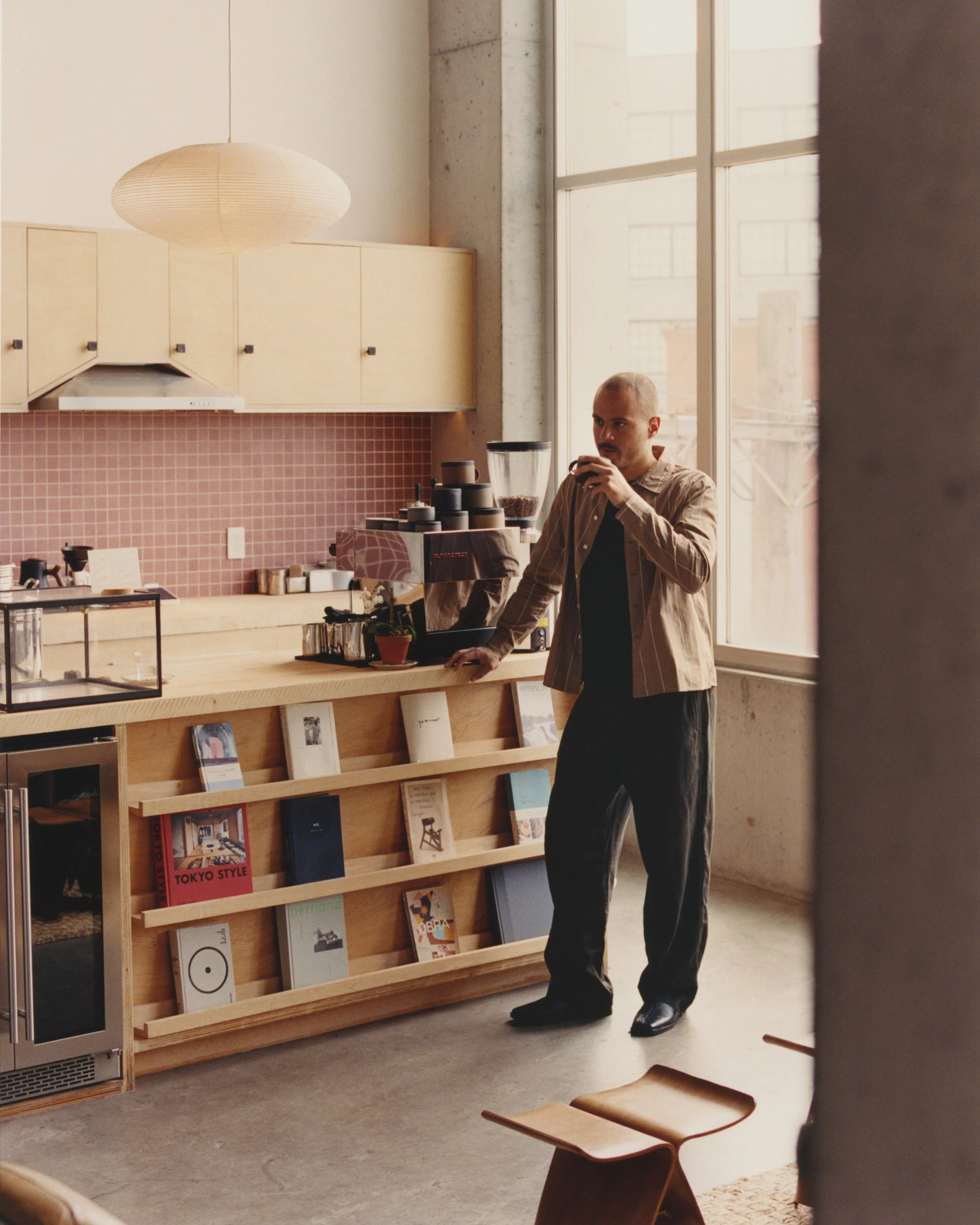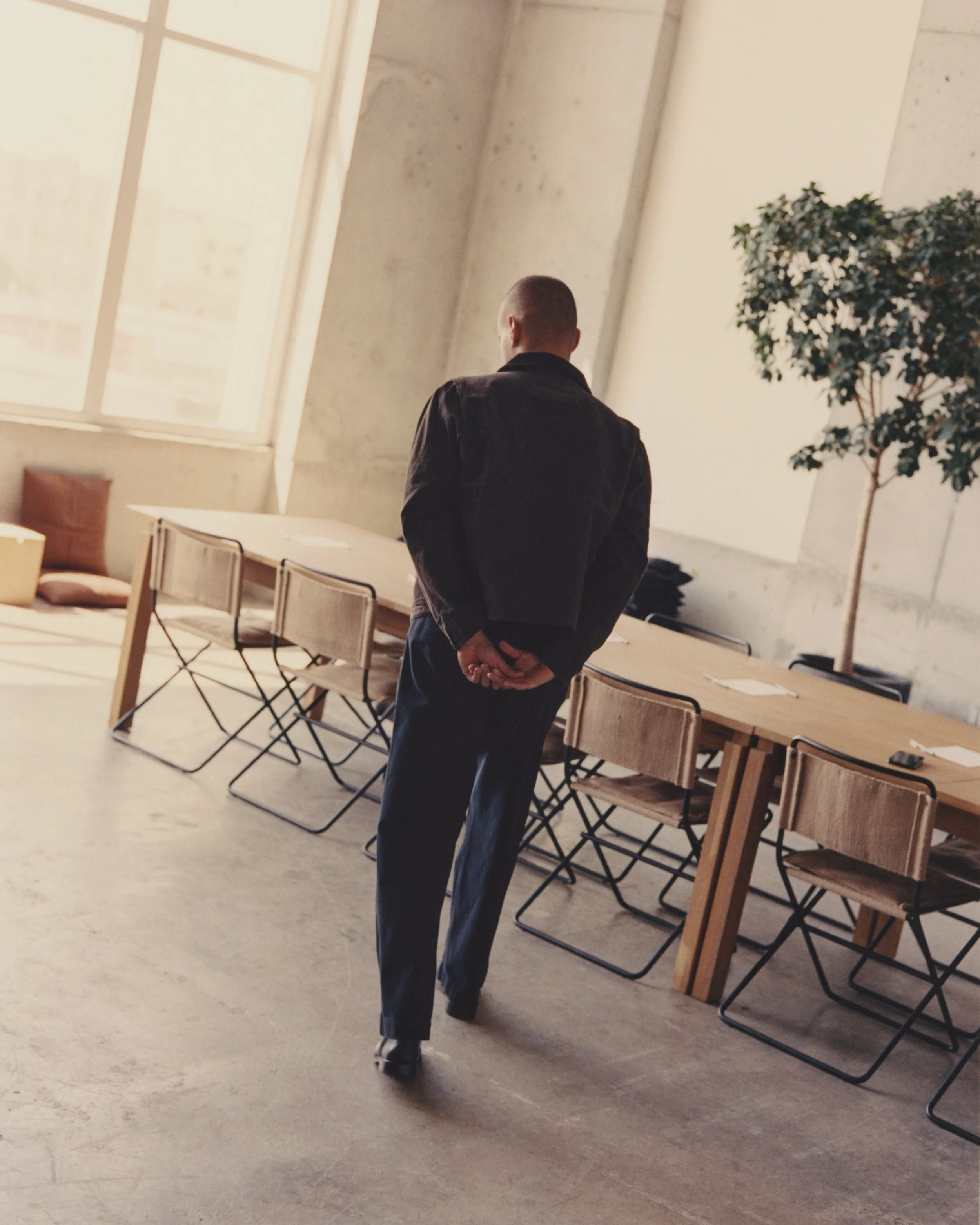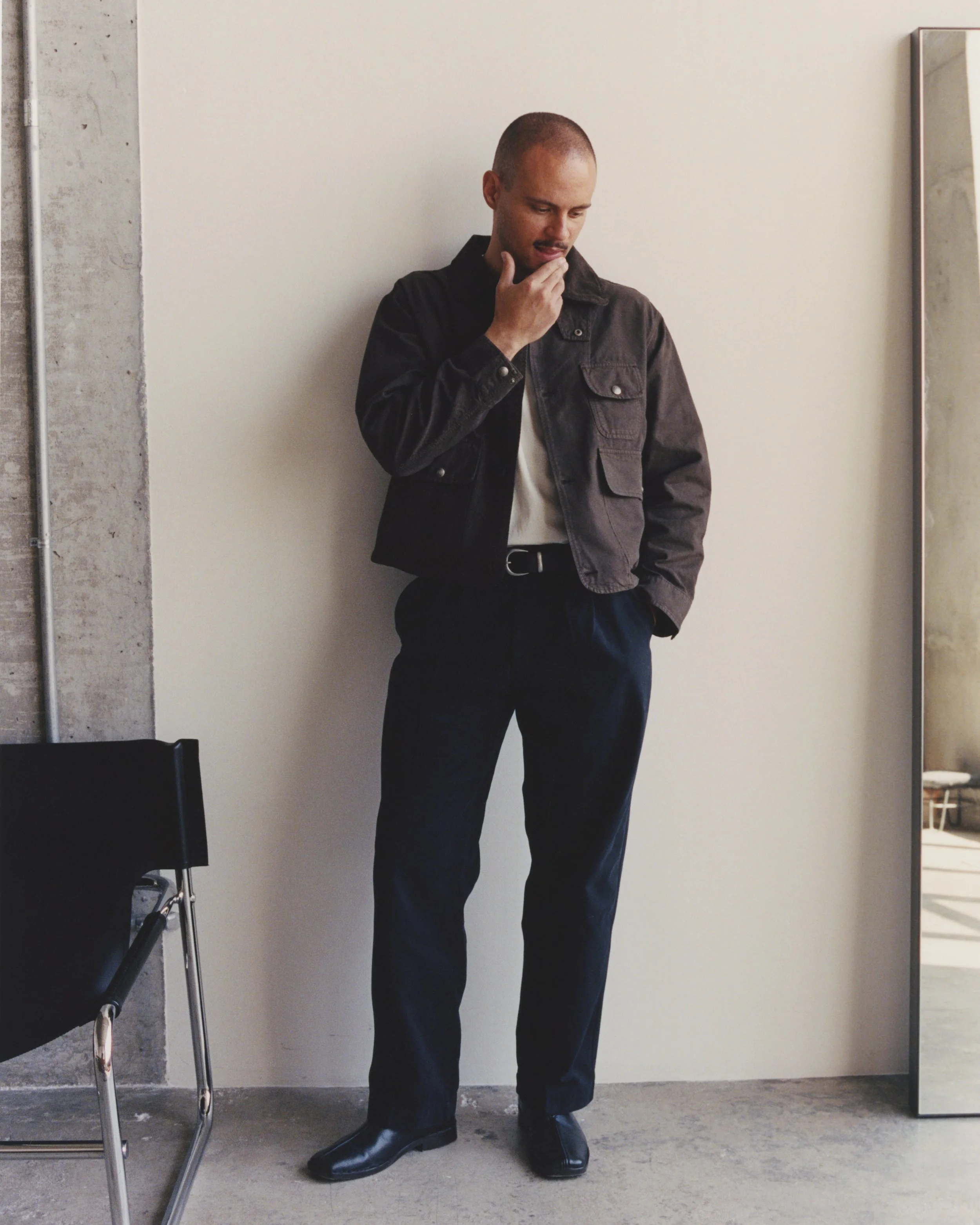LAOBRA — KNICKERBOCKER
In Focus: Michel Monegro of LAOBRA
We sat down with Michel Oscar Monegro, the founder of LAOBRA, to talk about his journey from Paterson to New York’s creative scene, how a quiet studio experiment turned into a thriving community hub, and his vision for reimagining hospitality in service of artists.
I met Michel through a mutual friend—one of those connections that, once made, felt inevitable. Over coffee and a visit to his studio, we talked about how LAOBRA came to be—and where it might be going next.
LAOBRA started as a photo studio space. A place people could book and rent for photoshoots—nothing unfamiliar to us but Michel had a deeper vision. He introduced coffee into the mix, not just as an amenity but as a way to create conversation. What followed was a unique work environment—spaces not just to shoot, but to sit, to think, to work, and to be surrounded by others doing the same.
The model is simple but thoughtful. You can visit LAOBRA for the day, work from the space, and have a really good coffee while you’re at it. It’s a calm setting, open to anyone looking to settle in, stew on ideas, and feel like they’re part of something. There’s still a dedicated photo studio, but that’s just one piece.
It reminded me of how we started Knickerbockerfirst as a manufacturing company, in a factory not so far from LAOBRA. In the beginning, we needed to offer a service that sustained us—manufacturing for others—before we could build somethinguniquely ours, and the brand was greatly influenced by the community of friends and makers who inhabited the space. Michel’s path was similar—foundation first, then the intuitive layers.
LAOBRA isn’t just Michel’s—it belongs to the people who walk through the door. That’s what makes it work. That’s what makes it feel like something worth coming back to.
Andrew: Can you tell us a bit about your background, and what led you to start LAOBRA?
Michel: Absolutely, but let me start by saying how inspired my fiancé Alex and I are by what you both have built together alongside your small and mighty team. After hearing your story, your grit and resilience is something we’ve been thinking a lot about lately and we hope to emulate that same energy for years to come.
Now to your question: I believe all things we do should start with a clearly defined reason, our “WHY.” Mine for shaping LAOBRA wasn’t originally about starting a business—it came from falling out of love with my work. I was raised very humbly in a large city in New Jersey called Paterson. Growing up, I didn’t really know where I fit in—no one around me thought quite like I did. Few people around me seemed as unsettled by the status quo of life as I was. As the observer that I am, I often knew more about what I didn’t want than what I did.
Things shifted in 2014 when I saw JR’s TED Talk about using art to turn the world “Inside Out.” That’s when I realized what lit me up was helping people feel seen. So I followed that feeling—believing that somewhere in New York City’s art world, I’d find my way closer to that calling.
After years of knocking, in 2018 a door finally opened for me at Milk Studios when they still had their iconic space in the Meatpacking District. After about 15 months of working my way up their ranks, I flew the coop and began my freelance career in commercial advertisement photography. I started at the bottom of the call-sheet as a Production Assistant, then worked my way up to a Photo Assistant, and most recently as a Digital Tech—which basically means I help photographers manage their digital images throughout the photoshoot.
By 2022 I had been freelancing for about 3 years, and by superficial measures I should’ve been happy. I earned well in my role as a Digital Tech, I had reliable clients, and worked with tons of friends. However, as grateful as I remain for that era of my career, I just wasn't feeling it anymore. I felt my passion for creating evaporating with time and knew I needed to find a way to rekindle the fire for creating I once held in my heart.
I felt I needed space where I could experiment with complete freedom, tinker with all things I felt drawn to. Some days it could be photography—or roasting coffee—maybe even making furniture. By the end of this chapter, my rediscovery of passion came from all those things—but also it surprisingly came from the process of shaping the space that made that exploration possible—the space that continues to welcome experimentation—better yet, encourage it. A space that serves as a conduit between us and that pure feeling of excitement brought on by child-like play, balanced between rest and work. That process continues to this day—and thankfully, it feels never-ending.
Andrew: LAOBRA started as a studio rental and grew into something much more—when did you realize it had become a community, not just a space?
Michel: When we opened the studio doors, we did it quietly—but not alone. A few close friends came by that first weekend in May of 2023 for a little get-together. The paint was still drying, and the scent of fresh coffee from my experiments on our espresso machine drifted through the space. It wasn’t polished—but it was ours.
The first few months were slow, so instead of leaving the space empty, we invited friends over for coffee on the weekends. Eventually, they started bringing more friends, and soon we had people asking if the “café” was open on other days. It wasn’t supposed to be a café—but if people felt comfortable enough to show up, connect, and hang out for a while. We figured we should lean into that. So we did.
About two months after those first weekend pop-ups, I walked into the space and didn’t recognize a single person. That’s when I knew LAOBRA was becoming something more. Not just a studio, but a place people felt drawn to. A community was forming—and it was so beautiful to watch it unfold.
Andrew: The logo feels deeply personal. Can you walk us through the meaning behind it and how it reflects what you’re building?
Michel: How we visually present LAOBRA—including our logo—is definitely always evolving and in constant flow. I love to tinker, so naturally my file names always end up something like “LAOBRA-LOGO-FINAL-v24”…followed shortly by “FINAL-v25,” and so on. I’m always learning more about what LAOBRA is, often by understanding more clearly what it’s not, and using those insights to refine.
Most of the changes are so subtle no one notices them but me. But I do it because even a 1% improvement matters. The logo isn’t just a mark—it’s a mirror of the process behind it: thoughtfully minimal and always in conversation with what we’re building.
Our visual language uses squares, or building blocks—like those we played with as kids—and similar shapes that can firmly stand on their own—but when paired together, they begin to form something stronger. That’s the heart of LAOBRA: individual pieces, and people, coming together through a shared mission—each made more complete, more grounded, and more intentional through that connection.
Andrew: What do you hope someone takes away after spending a day at LAOBRA—whether they’re there to work, shoot, or just have a coffee?
Michel: I want people to walk away knowing that their dreams are possible. My hope for LAOBRA is that it always serves as constant reminder that if you choose to follow your heart and intuition, life will always take care of you. By doing that—you find your people, you find your spaces, and you find more of yourself.
That same intuition is what guided us to our core belief that life is really all about finding that delicate balance between rest, work, and play. It’s the essence of that belief that we strive to infuse into every space we create and every single cup of our coffee.
Andrew: LAOBRA has already evolved so much—can you tell us a bit more about your vision for where it could go next?
Michel: More clearly now than ever, we understand that LAOBRA is a hospitality brand reimagined for artists and the creative process. Our mission is to dream up and forge thoughtfully curated spaces and services that contribute uniquely and symbiotically to the artist’s pursuit of happiness—like our Café and Studio.
In the next few years, I’m excited to continue developing both, but I feel especially energized by the potential of expanding our café and coffee roasting program. There’s so much room to deepen that offering—not just as a product, but as a platform for storytelling and connection.
Further down the line, I’m also excited for us to bring to life an artist retreat—a physical place, far from the rush of the city, designed for creators to rest, recharge, and reconnect with their purpose. Putting to use all our learnings from forging private and public spaces where artists thoughtfully explore their great ideas.
Everything we build is in service of that larger idea: that artists deserve an ecosystem that support not just their work, but their well-being.



